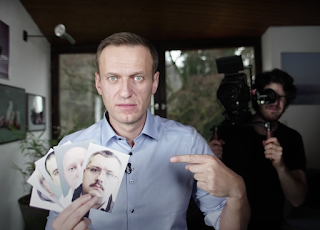 |
| Journalist Laura Tingle by James Powditch |
Australia's arguably most voyeuristic portrait prize exhibition is on display at the Art Gallery of NSW (AGNSW). This year, 52 portraits were chosen for inclusion from the 816 entries submitted to the AGNSW and generally the exhibition could be described as operating on safe territory with no controversies coming to light.
Absent were images of politicians with the subjects for painting being drawn mainly from sports, film and television actors, singers, academia, writers, art collectors/benefactors, artists painting other artists and not a few self portraits (a common approach each year). Subjects included actors Lisa McCune, Hugh Jackman and Debra Lee Furness; fim director Taika Waititi; art collectors / benefactors, Liz Laverty, Patrick Corrigan, Peter Wegener; singers Deborah Conway, Peter Garrett, TV personalities such as Brooke Boney and Yumi Stynes to list a few.
Artists selected for the most part are the well established names such as Wendy Sharpe, Ross Townsend, Nick Stathopoulus, Natasha Bieniek, Anh Do, Robert Hannaford, Tsering Hannaford (Robert Hannaford's daughter), Jasper Knight, Mathew Lynn, Noel McKenna, Vincent Namatjira, Thom Roberts, Joan Ross, Paul Newton, Richard Lewer, Catherine McGuiness, Natasha Walsh amongst the group.
The winner this year is Blak Douglas for his portrait of artist, Karla Dicken standing knee deep in flood water (the Lismore flood being the background for the painting and very topical at present) carrying leaking buckets. Blak Douglas is the second Aboriginal artist to win the Archibald prize.
The Wynn Prize for landscape painting or figurative art has around 34 entries with an increasing number of Aboriginal artists submitting large works. These entries predominantly from Central Australian or APY communities have increased the scope of the exhibition and added a new dimension. Quite a few artists submit entries for both the Archibald and Wynne prizes with this year, Jude Rae, James Powditch and Noel McKenna being in both.
The smallest of the 3 exhibitions is the Sulman Prize for subject, genre or mural painting and 31 entries were selected this year. This is the exhibition with the largest number of new artists being shown. Its a more esoteric and often mixed media/materials for the works.
The exhibition runs from 14 May to 28 August 2022.







